#international house of music
Video
[ DJ Mute City - PlayStation DanceMix Vol.1 (Clip) ]
#click hyperlink for full mix#DJ Mute City#PS1 music#my mixes#dance music in games#VGM mix#VGM#house music#breaks#DNB#drum n bass#drum & bass#jungle music#Internal Section#Persona#The Snowboard#cyberwave
65 notes
·
View notes
Text
LONDON MODULAR ALLIANCE
ACID LAB | INTLBLK006 12", 2018
#audio#london modular alliance#acid house#dub techno#electro#IDM#INTLBLK006#rhythm section international#techno#electronic#music#HEAVY REPEAT
28 notes
·
View notes
Text






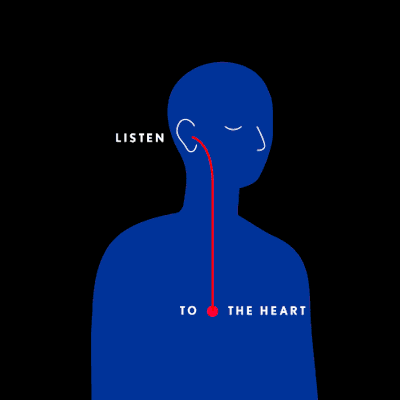
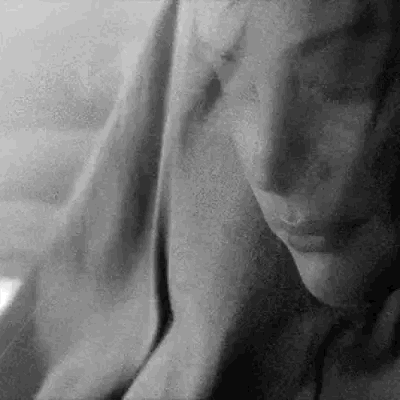
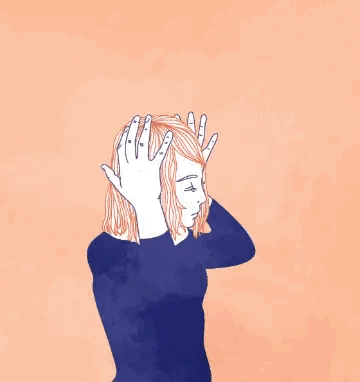
Wonderful I could cry 😭
𝚃𝚑𝚊𝚝’𝚜 𝚝𝚑𝚎 𝚙𝚕𝚊𝚌𝚎 𝚠𝚑𝚎𝚛𝚎 𝚖𝚢 𝚑𝚘𝚞𝚜𝚎 𝚞𝚜𝚎𝚍 𝚝𝚘 𝚜𝚝𝚊𝚗𝚍
𝚆𝚑𝚎𝚛𝚎 𝙸 𝚕𝚎𝚊𝚛𝚗𝚎𝚍 𝚑𝚘𝚠 𝚝𝚘 𝚋𝚎𝚑𝚊𝚟𝚎
𝙰𝚗𝚍 𝚝𝚘 𝚋𝚎 𝚕𝚒𝚔𝚎 𝚎𝚟𝚎𝚛𝚢𝚘𝚗𝚎 𝚎𝚕𝚜𝚎
𝚈𝚘𝚞 𝚝𝚘𝚕𝚍 𝚖𝚎 𝚠𝚑𝚊𝚝 𝚝𝚘 𝚜𝚊𝚢
𝚆𝚑𝚊𝚝 𝚜𝚘𝚛𝚝 𝚘𝚏 𝚌𝚕𝚘𝚝𝚑𝚎𝚜 𝚝𝚘 𝚠𝚎𝚊𝚛
𝚆𝚑𝚎𝚛𝚎 𝚝𝚘 𝚐𝚘, 𝚗𝚘𝚝 𝚝𝚘 𝚐𝚎𝚝 𝚕𝚘𝚜𝚝
𝙰𝚗𝚍 𝚠𝚑𝚘 𝚊𝚖 𝙸 𝚜𝚞𝚙𝚙𝚘𝚜𝚎𝚍 𝚝𝚘 𝚝𝚊𝚕𝚔 𝚝𝚘
𝙰𝚗𝚍 𝚊𝚕𝚕 𝚝𝚑𝚘𝚜𝚎 𝚖𝚘𝚖𝚎𝚗𝚝𝚜
𝙻𝚘𝚜𝚝 𝚕𝚒𝚔𝚎 𝚝𝚎𝚊𝚛𝚜 𝚒𝚗 𝚛𝚊𝚒𝚗
𝙻𝚒𝚔𝚎 𝚖𝚢 𝚜𝚝𝚛𝚎𝚗𝚐𝚝𝚑
𝙽𝚎𝚟𝚎𝚛 𝚝𝚘 𝚛𝚎𝚝𝚞𝚛𝚗 𝚊𝚐𝚊𝚒𝚗
𝙽𝚎𝚟𝚎𝚛 𝚝𝚘 𝚛𝚎𝚝𝚞𝚛𝚗
𝙰𝚗𝚍 𝚊𝚕𝚕 𝚝𝚑𝚘𝚜𝚎 𝚖𝚘𝚖𝚎𝚗𝚝𝚜
𝙻𝚘𝚜𝚝 𝚕𝚒𝚔𝚎 𝚝𝚎𝚊𝚛𝚜 𝚒𝚗 𝚛𝚊𝚒𝚗
𝙻𝚒𝚔𝚎 𝚖𝚢 𝚜𝚝𝚛𝚎𝚗𝚐𝚝𝚑
𝙽𝚎𝚟𝚎𝚛 𝚝𝚘 𝚛𝚎𝚝𝚞𝚛𝚗
𝙰𝚗𝚍 𝚊𝚕𝚕 𝚝𝚑𝚘𝚜𝚎 𝚖𝚘𝚖𝚎𝚗𝚝𝚜
𝙻𝚘𝚜𝚝 𝚕𝚒𝚔𝚎 𝚝𝚎𝚊𝚛𝚜 𝚒𝚗 𝚛𝚊𝚒𝚗
𝙻𝚒𝚔𝚎 𝚖𝚢 𝚜𝚝𝚛𝚎𝚗𝚐𝚝𝚑
𝙽𝚎𝚟𝚎𝚛 𝚝𝚘 𝚛𝚎𝚝𝚞𝚛𝚗 𝚊𝚐𝚊𝚒𝚗
𝙽𝚎𝚟𝚎𝚛 𝚝𝚘 𝚛𝚎𝚝𝚞𝚛𝚗
𝙰𝚗𝚍 𝚊𝚕𝚕 𝚝𝚑𝚘𝚜𝚎 𝚖𝚘𝚖𝚎𝚗𝚝𝚜
𝙻𝚘𝚜𝚝 𝚕𝚒𝚔𝚎 𝚝𝚎𝚊𝚛𝚜 𝚒𝚗 𝚛𝚊𝚒𝚗
𝙻𝚒𝚔𝚎 𝚖𝚢 𝚜𝚝𝚛𝚎𝚗𝚐𝚝𝚑
𝙽𝚎𝚟𝚎𝚛 𝚝𝚘 𝚛𝚎𝚝𝚞𝚛𝚗
𝚃𝚑𝚊𝚝’𝚜 𝚝𝚑𝚎 𝚙𝚕𝚊𝚌𝚎 𝚠𝚑𝚎𝚛𝚎 𝚖𝚢 𝚑𝚘𝚞𝚜𝚎 𝚞𝚜𝚎𝚍 𝚝𝚘 𝚜𝚝𝚊𝚗𝚍
𝚆𝚑𝚎𝚛𝚎 𝙸 𝚕𝚎𝚊𝚛𝚗𝚎𝚍 𝚑𝚘𝚠 𝚝𝚘 𝚋𝚎𝚑𝚊𝚟𝚎
𝙰𝚗𝚍 𝚝𝚘 𝚋𝚎 𝚕𝚒𝚔𝚎 𝚎𝚟𝚎𝚛𝚢𝚘𝚗𝚎 𝚎𝚕𝚜𝚎
𝚈𝚘𝚞 𝚝𝚘𝚕𝚍 𝚖𝚎 𝚠𝚑𝚊𝚝 𝚝𝚘 𝚜𝚊𝚢
𝚆𝚑𝚊𝚝 𝚜𝚘𝚛𝚝 𝚘𝚏 𝚌𝚕𝚘𝚝𝚑𝚎𝚜 𝚝𝚘 𝚠𝚎𝚊𝚛
𝚆𝚑𝚎𝚛𝚎 𝚝𝚘 𝚐𝚘, 𝚗𝚘𝚝 𝚝𝚘 𝚐𝚎𝚝 𝚕𝚘𝚜𝚝
𝙰𝚗𝚍 𝚠𝚑𝚘 𝚊𝚖 𝙸 𝚜𝚞𝚙𝚙𝚘𝚜𝚎𝚍 𝚝𝚘 𝚝𝚊𝚕𝚔 𝚝𝚘
𝙰𝚗𝚍 𝚊𝚕𝚕 𝚝𝚑𝚘𝚜𝚎 𝚖𝚘𝚖𝚎𝚗𝚝𝚜
𝙻𝚘𝚜𝚝 𝚕𝚒𝚔𝚎 𝚝𝚎𝚊𝚛𝚜 𝚒𝚗 𝚛𝚊𝚒𝚗
𝙻𝚒𝚔𝚎 𝚖𝚢 𝚜𝚝𝚛𝚎𝚗𝚐𝚝𝚑
𝙽𝚎𝚟𝚎𝚛 𝚝𝚘 𝚛𝚎𝚝𝚞𝚛𝚗 𝚊𝚐𝚊𝚒𝚗
𝙽𝚎𝚟𝚎𝚛 𝚝𝚘 𝚛𝚎𝚝𝚞𝚛𝚗
𝙰𝚕𝚕 𝚃𝚑𝚘𝚜𝚎 𝙼𝚘𝚖𝚎𝚗𝚝𝚜 - 𝙼𝚊𝚛𝚎𝚔 𝙷𝚎𝚖𝚖𝚊𝚗𝚗 𝚁𝚎𝚖𝚒𝚡 𝚋𝚢 𝙼𝚘𝚘𝚛𝚢𝚌
@esotericsnob 💃🏽 🕺🏼

#💃🏽#🕺🏼#Intomysoul#gif mood board#mood in between#1/2024#sexy beats#techno is sexy#on and on and on and on and on and on and#i need to dance the fuck out#deep house#track of the day#exploring music#international beats#x-heesy#fucking favorite#music#now playing#spotify#music and art#l o v e#Marek Hemmann#Mooryc#All Those Moments
20 notes
·
View notes
Text
Happy International Tuba Day
Here is my version of "Eda's Requiem", played on a BBb tuba.
#tuba#music#the owl house#edas requiem#eda clawthorne#raine whispers#toh raine#toh eda#musical instruments#brass music#international tuba day
17 notes
·
View notes
Text
yes i do have two separate tags for #goth and #gothic the vibes are interlinked but not interchangeable get it right
#the former is aesthetics— and music— based (primarily)#the latter is grounded in the literary/artistic mode of The Gothic. which overlaps with the aesthetics from the first one sure but not in#100% of cases. a movie can be both a book is usually only one. funny dancing skeletons are goth but a web weave dissecting the internal#contradiction of disordered family dynamics and using the metaphor of a haunted house is Gothic#this has been a post sponsored by my recent reread of the fall of the house of usher#jamie.txt#goth#gothic
23 notes
·
View notes
Audio
Ludwig A.F.’s Halo
#ludwig af#halo#ghostly international#spectral sound#music#electronic#two step#uk garage#house#techno#garage house#idm#electronica#ambient#club#dance#bandcamp#ludwig a f#ludwig a.f.
3 notes
·
View notes
Text



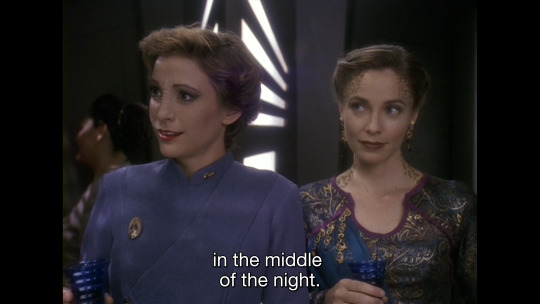


#deep space nine#star trek#trek#kira nerys#Worf#Worf son of Mogh House of Martok son of Sergei House of Rozhenko Bane to the Duras Family slayer of Gowron#trill#bajorans#klingons#for the record this episode tells a better queer story in 40 minutes than Discovery tells with twice the gay people in four seasons#and while i am ranting#Garak being queer coded and having a shotgun 'no homo' straight relationship forced on him by a homophobic producer#Is still a more interesting queer character than Discovery's four seasons of an openly married gay couple#Because Garak is allowed to have depth and internality#And the gays on Discovery are there to be movable furniture that garner PR-friendly GLaaD interviews#and then have to go back to the queer basement to affirm and validate one another by ritually chanting 'I feel seen' while the music swells#this is only a slight exaggeration of how Discovery tells corporately anodyne queer stories#I think my favourite thing about this episode is that its established up front that Trill society frowns on rejoined-symbiotes hooking up#with old flames but everyone on the station bluntly goes 'yeah but these two should absolutely bone down'
14 notes
·
View notes
Text
I hate being the one home during construction work sgdggdgd bc then I have to talk to them and im like "😢 you can't wait? You can't wait to ask my mom? I'm 25 going on 12... sorry"
#it helps that people think im nice i guess sgdggdgdgdg but it's like come oooon wait for a grown up 😪 that's not me#thankfully this is happening as an adult (all this construction) bc 12 year old me would be crying and hiding agsggsgdgdgdgdggd#marquilla#me now: house looks smokey bc im browning meat. loud music or podcast. house smells of said meat. i look like shit bc i just worked my job#me now (internally): can i fucking help you? 🚬😑
7 notes
·
View notes
Text
Aaron Dooley — The International Disassociation of (Centripetal Force/Island House)
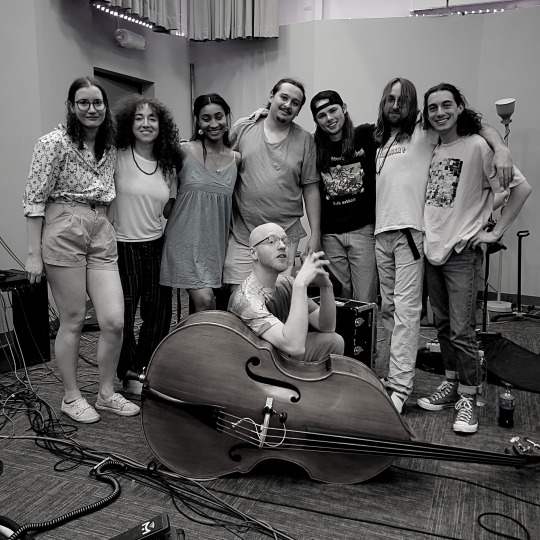
This second outing of 2023 from Aaron Dooley’s seven-piece jazz ensemble shimmers and shifts, an indefinite haze of sound breaking, sporadically, for clear flights of melody. Dooley, a bass player out of Denver, plunks a subtle, unsettling undertow, allowing other instruments—pedal steel, saxophone, even drums—to slip to the forefront. All improvised, these cuts absorb multiple points of view into free-flowing inquiry, not muddying them, but softening the edges.
“Passing Tres” for instance weaves slow-moving textures of bass, percussion, saxophone and trumpet together, letting the drums float to foreground with their punches and cymbal shivers (that’s Diego Lucero on kit). It’s a luminous, somewhat indistinct sound with flares of fusion-y futurism, a musing, narcotic drift to it. A skirling saxophone, played by Gabriella Zelek, breaks through like a swimmer to the surface, the bass roiling deep underneath. “What About Being Alone” shifts the focus to Cooper Dickerson, his plaintive surges of pedal steel lifting out of the soundscape, while Zelek’s sax swirls and blows around him. “Reward of Consequence” provides space for Aesop Adams, the guitarist and Dooley’s partner in Osmium House, to let things rip.
The disc’s first three cuts are relatively concise. The last three stretch to wider horizons. “Westbound Alameda” does this in a lyrical, laid-back way, an elastic foundation of bass and struck percussion supporting flares of trumpet (Gavin Susalski), slithery runs of sax and, again, that gorgeous pedal steel. “Funeral of Fireflies” abstracts country pedal steel into abstract shapes, letting the thump and pound of percussion push it away from conventional twang. Adams, here, executes whistle-high harmonics that cut through the haze and Zuri Barnes sings warmly, evocatively in the background. It sounds like a slightly countrified version of Laraaji’s transcendental bliss. Dooley’s band is rooted in jazz, but not confined by it. The final track with its stand-up bass and swaggering horn line sounds the most like big band swing. It also allows the wildest bouts of brass improvisation, with Susalski arcing off into the stratosphere from a swaying, grounding foundation.
It's not easy to get even a couple of people on one page, let alone seven. These tracks show a still relatively new configuration of people finding their way together, making a shared path and diverging from it.
Jennifer Kelly
#aaron dooley#the international disassociation of#centripetal force#island house#jennifer kelly#albumreview#dusted magazine#jazz#large ensemble#improvised music#fusion#Bandcamp
6 notes
·
View notes
Text
*
#I hung out with some old friends last night#[they’re all guys my age. we went to school together]#and it was really fun for the most part#but one of them (who was more part of that friend group than my friend) makes me want to commit first degree murder#he’s the stereotype of men in their early 20s who ‘love music’ and gatekeep to a parodic degree#like listens to all this shitty overproduced machine generated house music and a couple other obscure things#and acts like he’s fucking Mozart#he has no musical background or training or skills but wants to be a ‘producer’ and is trying to make it with a metal band#but every time I (who am a classically trained harpist and did a bunch of classes in the music school at an Ivy) or any of the other guys#suggested or said something#he got all huffy#like it was a personal insult to him to have different taste#same when we talked about travel#I lived outside of our home country for almost 4 years to do uni and am abroad at least 4-5 months of every year#he’s left once (to go meet a girl he met online to predictable results) and acts like he’s an expert on international travel#are all men in their early 20s insufferable or just 95% of the ones I meet?#not the stones#me stuff
3 notes
·
View notes
Text
really hope hands like houses can find another vocalist who doesn't americanise :/ that's what I liked most about trenton
#hlh#hands like houses#listening to unimagine rn#sooo many australian vocalists are like ''hahaha obvs i have to americanise or ill sound dumb''#thats because you dont take your own accent seriously#and because people legit just arent used to hearing australian accents in music#international audiences arent used to them not being treated like a joke#if you actually care enough your voice will sound good regardless of accent
3 notes
·
View notes
Video
Remote Control Dandy - Movie Event
from: [DJ Mute City - PlayStation DanceMix Vol.1]
#Remote Control Dandy#PS1 music#house music#VGM#dance music in games#Internal Section#my mixes#DJ Mute City#PS1#PlayStation
9 notes
·
View notes
Text
CABARET VOLTAIRE // TAXI MUTANT
[INTERNATIONAL LANGUAGE, 1993]
#audio#cabaret voltaire#richard h kirk#tech house#industrial#electro#synthpop#experimental#international language#90s#techno#electronic#music#u
29 notes
·
View notes
Text
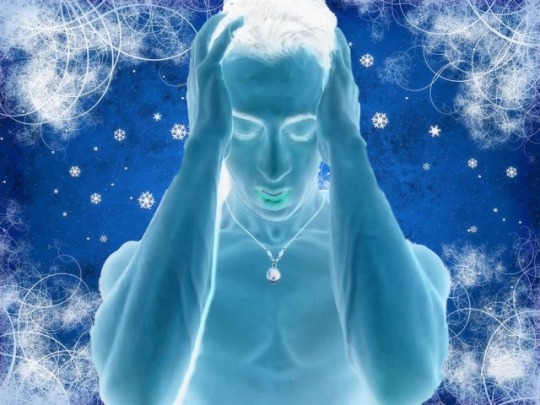
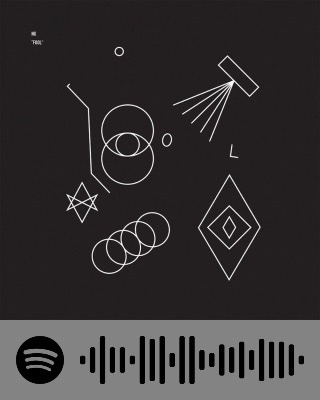
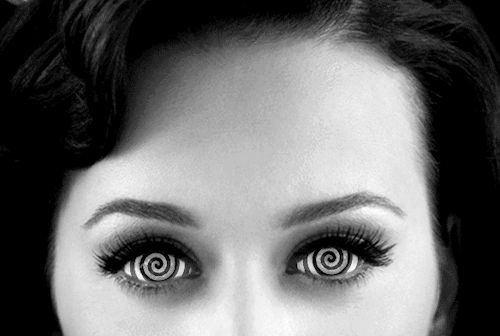
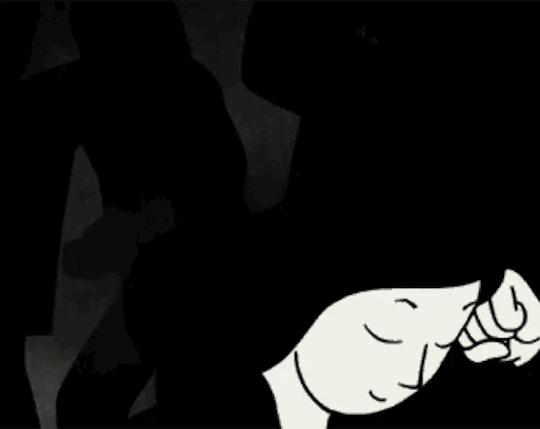

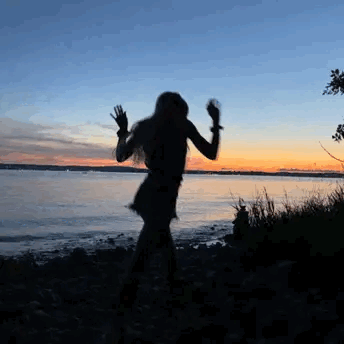
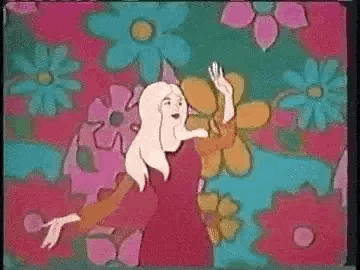
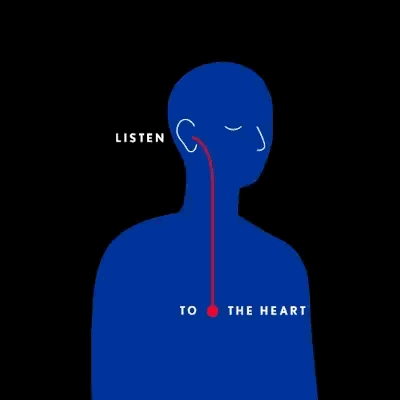
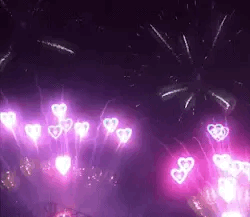
𝙸𝚗𝚝𝚘𝚖𝚢𝚜𝚘𝚞𝚕:
(𝙾𝚗 𝚊𝚗𝚍 𝚘𝚗 𝚊𝚗𝚍 𝚘𝚗 𝚊𝚗𝚍 𝚘𝚗 𝚊𝚗𝚍 𝚘𝚗 𝚊𝚗𝚍 𝚘𝚗 𝚊𝚗𝚍)
𝙳𝚘𝚗’𝚝 𝚋𝚎 𝚗𝚘 𝚏𝚘𝚘𝚕
𝙷𝚘𝚕𝚍𝚒𝚗𝚐 𝚘𝚗 𝚝𝚘 𝚝𝚑𝚎 𝚝𝚑𝚒𝚗𝚐𝚜 𝚝𝚑𝚊𝚝 𝚑𝚞𝚛𝚝 𝚢𝚘𝚞 𝚖𝚘𝚜𝚝
𝙰 𝚋𝚊𝚕𝚕 𝚊𝚗𝚍 𝚌𝚑𝚊𝚒𝚗 𝚊𝚛𝚘𝚞𝚗𝚍 𝚢𝚘𝚞𝚛 𝚏𝚎𝚎𝚝
𝚂𝚖𝚎𝚕𝚕𝚒𝚗𝚐 𝚗𝚘𝚜𝚝𝚊𝚕𝚐𝚒𝚊 𝚍𝚎𝚏𝚎𝚊𝚝
𝙰𝚗𝚍 𝚠𝚑𝚎𝚗 𝚢𝚘𝚞 𝚠𝚎𝚛𝚎 𝚢𝚘𝚞𝚗𝚐
𝚆𝚒𝚝𝚑 𝚏𝚕𝚎𝚎𝚝𝚒𝚗𝚐 𝚏𝚎𝚎𝚝
𝙳𝚊𝚗𝚌𝚒𝚗𝚐 𝚊𝚠𝚊𝚢
𝙰𝚕𝚠𝚊𝚢𝚜 𝚒𝚗 𝚝𝚑𝚎 𝚏𝚕𝚘𝚠
𝙰𝚕𝚠𝚊𝚢𝚜 𝚒𝚗 𝚝𝚑𝚎 𝚋𝚎𝚊𝚝
𝙰𝚗𝚍 𝚕𝚒𝚔𝚎 𝚕𝚒𝚐𝚑𝚝𝚜 𝚜𝚑𝚘𝚠
𝚈𝚘𝚞𝚛𝚜𝚎𝚕𝚏 𝚢𝚘𝚞 𝚌𝚘𝚞𝚕𝚍 𝚋𝚎
𝙵𝚛𝚎𝚎 𝚏𝚛𝚘𝚖 𝚊𝚕𝚕 𝚠𝚘𝚛𝚛𝚒𝚎𝚜
𝚈𝚘𝚞’𝚟𝚎 𝚌𝚘𝚖𝚎 𝚜𝚘 𝚏𝚊𝚛
𝙶𝚘𝚝 𝚊 𝚋𝚛𝚒𝚐𝚑𝚝 𝚕𝚒𝚝𝚝𝚕𝚎 𝚜𝚝𝚊𝚛
𝚂𝚑𝚒𝚗𝚒𝚗𝚐 𝚝𝚑𝚎 𝚠𝚊𝚢
𝚂𝚘 𝚔𝚎𝚎𝚙 𝚑𝚒𝚍𝚒𝚗𝚐 𝚝𝚑𝚊𝚝 𝚙𝚎𝚊𝚛𝚕
𝙳𝚘𝚗’𝚝 𝚕𝚒𝚟𝚎 𝚒𝚗 𝚝𝚑𝚊𝚝 𝚜𝚑𝚊𝚍𝚘𝚠
𝙰𝚕𝚕 𝚘𝚞𝚛 𝚠𝚘𝚛𝚍𝚜 𝚊𝚛𝚎 𝚕𝚘𝚜𝚝
𝙸𝚗 𝚝𝚑𝚎 𝚠𝚒𝚗𝚍 𝚊𝚗𝚍 𝚊𝚕𝚕 𝚖𝚢 𝚕𝚘𝚟𝚎
𝙶𝚘𝚎𝚜 𝚝𝚘 𝚙𝚎𝚛𝚒𝚜𝚑
𝙰𝚗𝚢𝚝𝚑𝚒𝚗𝚐 𝙸 𝚍𝚘, 𝚒𝚏 𝙸 𝚌𝚘𝚞𝚕𝚍 𝚑𝚎𝚕𝚙 𝚢𝚘𝚞
𝙸’𝚕𝚕 𝚝𝚛𝚢 𝚊𝚗𝚍 𝚗𝚘𝚝 𝚑𝚞𝚛𝚝 𝚢𝚘𝚞
𝙳𝚘𝚗’𝚝 𝚋𝚎 𝚗𝚘 𝚏𝚘𝚘𝚕
𝙸 𝚔𝚗𝚘𝚠 𝚢𝚘𝚞’𝚛𝚎 𝚗𝚘𝚝 𝚗𝚘 𝚏𝚘𝚘𝚕
𝙸𝚝 𝚒𝚜 𝚢𝚘𝚞, 𝚒𝚝 𝚒𝚜 𝚢𝚘𝚞, 𝚒𝚝’𝚜 𝚠𝚑𝚊𝚝 𝚒𝚜 𝚖𝚘𝚜𝚝 𝚘𝚏 𝚖𝚎 𝚊𝚗𝚍 𝚢𝚘𝚞
𝙸 𝚏𝚎𝚎𝚕 𝚏𝚘𝚛 𝚢𝚘𝚞, 𝚒𝚗 𝚕𝚎𝚝𝚝𝚒𝚗𝚐 𝚐𝚘
𝙱𝚎 𝚜𝚞𝚛𝚎 𝚒𝚝’𝚜 𝚗𝚘𝚝 𝚏𝚘𝚛 𝚜𝚑𝚘𝚠 𝚊𝚗𝚍 𝚝𝚎𝚕𝚕
𝙱𝚞𝚝 𝚖𝚢 𝚠𝚘𝚛𝚍𝚜 𝚊𝚗𝚍 𝚖𝚢 𝚐𝚎𝚜𝚝𝚞𝚛𝚎𝚜
𝙹𝚞𝚜𝚝 𝚕𝚒𝚔𝚎 𝚙𝚒𝚜𝚜 𝚒𝚗 𝚝𝚑𝚎 𝚠𝚒𝚗𝚍
𝙰𝚗𝚍 𝚔𝚎𝚎𝚙 𝚘𝚗 𝚐𝚎𝚝𝚝𝚒𝚗𝚐 𝚠𝚎𝚝
𝚂𝚘 𝙸 𝚠𝚘𝚗’𝚝 𝚋𝚎 𝚗𝚘 𝚏𝚘𝚘𝚕
𝙸 𝚠𝚘𝚗’𝚝 𝚕𝚎𝚝 𝚢𝚘𝚞 𝚑𝚞𝚛𝚝
𝙸 𝚠𝚘𝚗’𝚝 𝚋𝚎 𝚗𝚘 𝚏𝚘𝚘𝚕
𝙸 𝚍𝚘
𝙸 𝚍𝚘
𝙸 𝚍𝚘
𝙸 𝚍𝚘 @decemberthenemesis 😭
𝙵𝚘𝚘𝚕 - 𝙾𝚛𝚒𝚐𝚒𝚗𝚊𝚕 𝙼𝚒𝚡 𝚋𝚢 𝙽𝚞

#wonderful I could cry#gif mood board#mood in between#on and on and on and on and on and on and#1/2024#dj nu#nu#fool#Intomysoul#track of the day#exploring music#international beats#x-heesy#music#now playing#spotify#music and art#l o v e#deep house
10 notes
·
View notes
Text
FP Delos Santos 'caffeine addiction' Vertical MV
youtube
#FP Delos Santos#caffeine addiction#International Coffee Day#2022#2023#music video#FPDSPH#house music#OPM#P-pop#electropop#electronic music#dance music#Youtube
2 notes
·
View notes
Text
Dexter Void's Top 100 Films
I’d never claim to know anything about moviemaking, and the history of cinema, or even behold an in-depth knowledge of directors and actors, let along reel off well-known quotes. So, taking an intuitive approach to my favourites, this list of top 100 films is often based on the emotional states encountered when viewing them, as well as a vision of what’s technically impressive. And in undertaking something like this, it’s more-so interesting to unravel the characteristics of the self. In no way a movie-buff, it was still difficult to sift through the favourites oscillating in the mind and finally settle on the final 100. You can be captivated by film, but they also place the viewer within a memory or scenario, something that holds dear to the heart, and therefore encases it in place. And once you have the list, what do you do with it? It seemed like I had to prove why, and so a reasoning needed to be presented. There’s likely to be spoilers here, as well as agreements and/or debates, but I encourage everyone to create one. There can’t be a wrong answer if you think intensely enough about it. I therefore hope you enjoy interpreting my top 100 films.

#1
RATCATCHER
Lynne Ramsay, 1999, UK
You’d be forgiven for thinking not much actually happens during this sensitive gritty drama. It is, however, a beautiful debut by Lynne Ramsay, its refinement woven into the simplicity of its characters’ lives and surroundings. There’s a plain darkness scurrying underneath; Glasgow as industrial landscape, the canal as a dangerous entity and the binmen strike of the late ‘70s. We see young lad, James retreating into a world of confusion and curiosity, as he can only hope of a new life in a newly developed part of the city. His day-to-day existence is wistfully coerced and entangled by a crowd of odd locals and hostile environments. His imagination and aspiration, dashed against his own anguish and despair, take him to a place only he can truly fathom.

William Eadie as young lad James in Ratcatcher
#2
ORLANDO
Sally Potter, 1992, UK
This stately and often insightful historical account of England confused me for many years, my naïve mind not fully able to grasp, or follow the fantastical story. Eventually, its intricacies entranced my brain chasm; a sheer elegance found in Tilda Swinton marching headstrong through the various eras. These are well portrayed and historically detailed, at least to my eye, while she dazzles and transforms through each classical period to the next, leading a story of many layers. The soundtrack equally envelops my nimble frame in sheer mystique, while we experience Quentin Crisp as Queen Elizabeth I and Jimmy Somerville as a celestial chanteuse, pouring a non-binary serenade to an early ‘90s house beat. It all unfolds as a melting pot of abstract and noble plight.

Tilda Swinton as one of the reinventions of Orlando
#3
ZATOICHI
Takeshi Kitano, 2003, Japan
A reimagined story about a blind swordsman, told uniquely by Takeshi Kitano. Where previous films focused on featuring extended bursts of violence, revenge and blood in a more modern context, the nineteenth century feudal setting for the samurai-cum-masseuse brings acts of redemption, vengeance and ironic humour to the table. A riveting soundtrack propels us forward, revealing not only the story itself, but also bringing to life your own prefabricated dreams and desires.

Takeshi Kitano directs and stars as Zatoichi, the blind swordsman
#4
DEATH BECOMES HER
Robert Zemeckis, 1992, USA
Seeing this black comedy as a kid, I was engrossed by the hilarity of two feisty women (Goldie Hawn and Meryl Streep) battling it out to cause as much damage and harm as possible with no success. All manner of special FX enables them to contort and distort their newly everlasting bodies to amusing repercussions. All the while, a perplexed Bruce Willis merely looks on. As a grown-up, the film now unravels so many sociological ideas and theories around greed, narcissism and vanity. The desperation for immortality and one's legacy envelops the aura of this picture. This all somehow makes it a shrewd observation, underpinned by much slapstick and screwball.

Goldie Hawn and Meryl Streep as immortal beings in Death Becomes Her
#5
ALL ABOUT MY MOTHER
Pedro Almodóvar, 1999, Spain
Almodóvar deserves a place on a film list. His stories and direction are exuberant, full of life, colour and passion. I simply adore how All About My Mother is melodramatic with a huge heart, with a cast of characters to match. Bold and knee-deep in depth, their hardships captivate the audience, and all with a firm ironic nod to the 1950 classic, All About Eve starring Bette Davis.
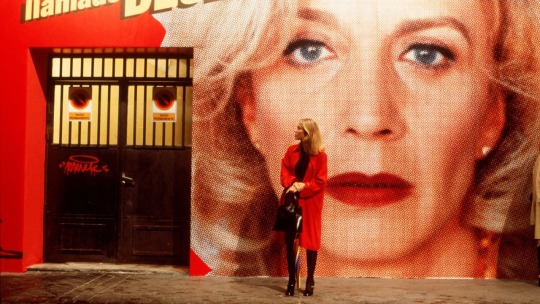
Cecilia Roth standing aside a poster of Marisa Paredes in All About My Mother
#6
I WALKED WITH A ZOMBIE
Jacques Tourneur, 1943, USA
The West Indies backdrop to this mysterious B-movie weaves an opaque, if not feverish impression. Its title is somewhat misleading and not the ‘zombies’ we’d typically imagine. Transported to the Caribbean, the determination of nurse Betsy Connell is steadfast as she tries to seek answers and remedies from a so-called witchdoctor, something of intrinsic folklore. The wonderful use of shadows and lighting create an eerie landscape, while the deployment of silence along creaky verandas, dark hallways and blustery crop fields keep the viewer engaged. We feel the loss and grief of the interwoven characters, while distant voodoo rhythms and whispers of superstition make for an unsettling environment, perfectly matching the tension that’s unable to hide from the lustrous moonlight.

'Zombie' Christine Gordon with Francis Dee & Tom Conway in I Walked with a Zombie
#7
GHOST WORLD
Terry Zwigoff, 2001, USA
It perfectly captures many things; the pressure of youth, and the confusion that comes from being a misfit, not to mention the boredom of smalltown life. Outsider Enid sure does relish in the cynicism of everything that obeys the patriarchy, but it’s fascinating to watch her carve out her place in the world. The film touches on the inevitable passage of drifting apart and the excitement of meeting someone new, the trappings of being a nerd and the absolute hypocrisy of others. At the end of all this discovery, what do we have to show for it? You eventually must tread your own path.
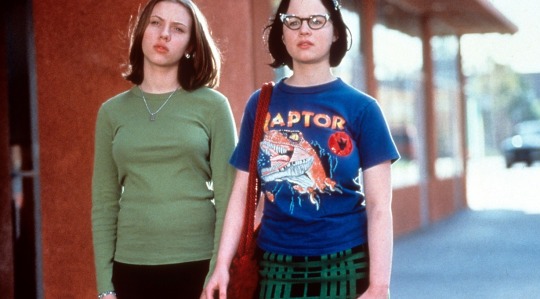
Scarlett Johansson and Thora Birch in Ghost World
#8
SECRETS & LIES
Mike Leigh, 1996, UK
Mike Leigh is a wonderful filmmaker and likely one of my favourites. With Secrets & Lies, he illustrates a delicate story and processes it in a complex family system via gritty drama. It’s full of, well, secrets and lies. It delves even deeper into your soul with characters who are honest and simple, full of their hidden pain and anguish, all-the-while projecting back our own doubts or feelings. It’s something Leigh does entirely well and is all the more heartfelt for it.

Marianne Jean-Baptiste and Brenda Blethyn in Secrets & Lies
#9
LA REINE MARGOT
Patrice Chéreau, 1994, France
Striding ahead, not leaving me enough time to catch my breath, this opulent epic flourishes in its own gore and violence. We witness a loveless royal marriage, the decadence of sixteenth century France and the impending combat between Protestants and Catholics in the St. Bartholomew's Day massacre. The fast-paced story unfurls a complex narrative of deceit, unions and passion, encroaching briskly to finally imbue its own blood. The percussion-based and droning string-led Medieval style soundtrack simply thrives, especially in the wild boar chase, all helping elevate the darkly humorous tale of lust, deception, revenge and its so-called allies.

Daniel Auteuil and Isabelle Adjani in La Reine Margot
#10
DOLLS
Takeshi Kitano, 2002, Japan
A second movie by Kitano in my top ten; Dolls seems to represent a translucent trio of human emotion, interwoven with, at times, an overbearing abstract demeanour. The striking costumes, landscapes and seasons that adorn the three sections can veer into overblown romanticism, with the viewer requiring a patient manner. But your gesture of poise is well rewarded, as we gracefully shuffle along with the bound lovers, overlapped by other love stories. This all serves to intensify our own accounts of grief, sadness and obsession with a tender eye that pays a wholehearted tribute to Japanese Bunraku puppet theatre.
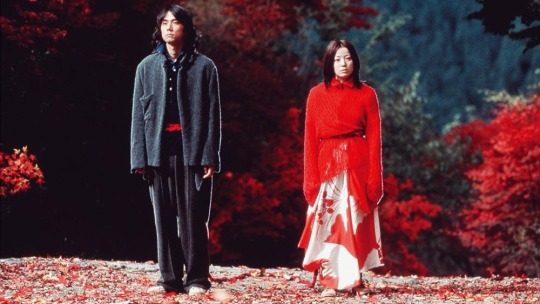
Hidetoshi Nishijima and Miho Kanno as bound lovers in Dolls
#11
THE LADY EVE
Preston Sturges, 1941, USA
It’s worth noting that certain pictures from the 1930s-1950s have had an impact early on, instilling a viewpoint outlining the key components that make up a film. The Lady Eve is full-on screwball tomfoolery, hilarious one-liners and observations, all steered by the marvellous Barbara Stanwyck. It’s a riotous gallop of deceit and fraud, which interferes with, and plays havoc with the naïve, yet loveable gestures offered from Henry Ford. Taking place partly on a cruise liner, we also travel by overnight train where the antics only blossom further when the headstrong Stanwyck reinvents herself as an English aristocrat. The dinner party scene is unforgettable!
#12
MOROCCO
Josef von Sternberg, 1930, USA
Marlene Dietrich is something of an enigma. She dazzled me from a young age, and Morocco was an early viewing that started a spellbinding journey. The mysterious setting flits around human emotion and its quest for true love. Experimental lighting and camerawork are on display here, and we have the eye-pleasing Gary Cooper as the Légionnaire Dietrich craves. All-the-while, her fabulous and often gender-bending ceremony at the nightclub lures us into a world of unknowns. We react to the sentiments throughout, all building to a brooding bar scene, its piano dirge willing us on to join her at the film’s hushed and plaintive finale.
#13
BORN YESTERDAY
George Cukor, 1950, USA
It’s engrossing to witness a brash tycoon hiring a well-educated journalist, who’s only remit is to teach a so-called dumb blonde mistress and make her seem more appealing and presentable to important folks. We witness her brush-up on etiquette, culture and American history, which is why it’s funny to see the original intention fail. The Oscar winning performance by Judy Holliday is deserved, even if she is playing a feisty, irritable character, you’re rooting for her all the way as she sheds her boisterous and rough around the edges persona.
#14
SLEEPING BEAUTY
Clyde Geronimi, 1959, USA
This could be considered an odd Disney choice on the list, especially when the studio produced classics such as Dumbo, Pinocchio and Snow White and the Seven Dwarfs. What I love about Sleeping Beauty is its angular animation motif and slightly darker tinted colour palette, backed by the astounding Tchaikovsky score. It dissolves some of the regular Disney cuteness and more-so brings sheer horror to the medieval table, and to me, also feels like a farewell to the 1950s. Maleficent is depicted as truly evil, and her gothic Forbidden Mountain only enriches the mystery. There is light relief in the form of three good fairies, and it’s somewhat amusing how aloof Aurora and Prince Philip seem to be. Even more comical is the sheer shock from the aristocracy at the thought of him wanting to marry ‘a peasant girl’.
#15
SUNSET BLVD
Billy Wilder, 1950, USA
This darkly humorous and satirical look at Hollywood as an industry and its supposed has-beens certainly feels like a scathing attack on the studios that birthed them. Documenting the mere descent of a faded silent film star into insanity, played superbly by Gloria Swansons, it cleverly captures that desperation to be an immortal glowing icon. Rather exceptional considering Swanson herself was from the silent era, while it also features cameos from other silent luminaries including Buster Keaton and Anna Q. Nilsson. It has a fiery, sordid eye looking down on us with comical, if not reproachful one-liners concerning the state of the current film industry, as well as bygone glory days. You can also read much into it from a modern context; our throwaway society and obsession with maintaining youth, the desperation clinging to an omnipotent plain.
#16
CABARET
Bob Fosse, 1972, USA
The escapades and frolics of Sally Bowels remain in your tortured soul and brings a dose of longing to the somewhat fancy-free times it portrays. Berlin at the onset and gradual rise of Nazi Germany is startling against the backdrop of the 1930s. It explores offbeat flapper girl-types, styles and idioms, all wrenched with a sort of seedy psycho-sexual prowess shimmying with oddball reprobates, their quirkiness free and easy. Joel Gray as Master of Ceremonies is fabulous in an untouchable sculpture-like way, as is Liza Minelli as Ms Sally Bowles in a role that seemed to be made for her. Musicals aren’t entirely my thing (and downright rubbish in my opinion), yet Cabaret features gut-wrenching timeless songs with an equal level of humour, soul and yearning. Bob Fosse’s choreography is rowdy, inventive and gaudy, all in the gender-bending style of 1930s swing and chanson mimicking that of the seedy underbelly of an abstract Kit Kat Klub. This is something he explored in his previous picture Sweet Charity, but with the added rise and sobering integration of the Nazi’s in Cabaret, we have a more thought-provoking outcome.
#17
THE PIANO
Jane Campion, 1993, New Zealand
There are two striking components to this tale of loss and obsession; a lush and vibrantly moist landscape around a painstakingly pertinent costume drama which transcends beyond that of others. With unbudging characters, the gothic-drenched romance has a burden as heavy and unwieldly as the grand piano isolated on the beach. The muted lead of Ada McGrath communicates not only through sign, signal, and notetaking, but through the piano itself; an overbearing hulk of a figure that often yields heart-wrenching conclusions. Along with it, the Michael Nyman score leads us gallantly through the New Zealand wilderness with an equally obsessive eye.
#18
THE LITTLE MERMAID
Ron Clements and John Musker, 1989, USA
A second Disney choice here is from the contemporary era, dating back to when the studio more-or-less kickstarted their renaissance, and guided them through the ‘90s and beyond, thus rejuvenating the corporation after some stagnant years in the wilderness. Based on the Hans Christian Anderson fairytale, The Little Mermaid features outlandish, larger-than-life characters, a blend of brilliant songs and gleaming aquatic animation. The adventure glides along on a riveting underwater current of straightforward storytelling, never shying away from a charming sense of humour or darker depths of despair.
#19
THE WIZARD OF OZ
Victor Fleming, 1939, USA
Undoubtedly on many movie lists; a poignant ode to childhood and uncomplicated fantasy which only develops your melancholic gears as you grow older. Guaranteed to bring me to tears every time, yet I question why? In a modern context, it’s nostalgia for a dreamworld that embraces a sumptuous colour palette after so much sepia, all of which is further enhanced by flamboyant and vulnerable characters, sing-along tunes and a yearning for something you can’t quite comprehend.
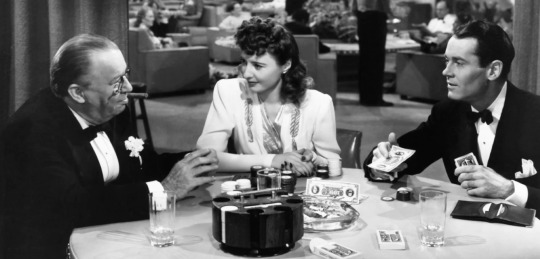
Charles Coburn, Barbara Stanwyck and Henry Fonda in The Lady Eve
#20
MANHATTAN MURDER MYSTERY
Woody Allen, 1993, USA
A riotous crime-solving excursion carried out by Woody Allen and Diane Keaton. They perfectly bounce off one another while they attempt to unravel and piece together a mosaic of strange goings-on and mysterious incidences, all in a hilariously slapdash way. With many gags along the way, Allen offers viewers just a pinch of insight into what’s happening as we try to keep up with their haphazard detective work, culminating in a delightfully perfectly imperfect choreographed tape machine manipulation. You might not perceive any bold statements, but it does lure viewers into a rather inquisitive journey, keeping you on the edge of your seat.
#21
HEAVENLY CREATURES
Peter Jackson, 1994, New Zealand
Based on the true story of two inseparable girls, who form a close friendship and consciously decide to commit murder when forced apart. The adaptation is devastating in its subtlety, interspersed with gallant fantasy worlds from the viewpoint of a young mind when presented with an inaccessible, and out of reach worldview. This is brilliantly emphasised by the slightly claustrophobic social setting of 1950s New Zealand, and lead actors Melanie Lynskey and Kate Winslet, in her debut role, offering their off-kilter and oddball personas with a captivating charm. Watching the friendship grow as an outsider brings forth the voyeur in you, and the heartbreak felt on both sides towards the films climax is none other than disturbing.
#22
THE PIANO TEACHER
Michael Haneke , 2001, France
Precisely what is deep-rooted within the disposition of the main character in The Piano Teacher is one that can trouble you, or is it a reflection of the faults you see in yourself? Played exquisitely by Isabelle Huppert, her psycho-sexual prowess and bizarre way of thinking erupts throughout and results in a desperate plea mired in transgression.
#23
THE CIRCLE
Jafar Panahi, 2000, Iran
It’s easy for me to speak highly of how The Circle is an exemplary modern-day account depicting the oppression women face in Iran. But watching a late night showing on Channel 4 in the early 2000s with no expectation as to what it was about threw me off guard. In fact, it was broadcast as a double bill with another Iranian film, possibly by Panahi. I don’t recall the name, but it was a primitive shot of a conversation in a cable car. Back to The Circle, we’re fully devoted to the women we traipse behind and feel fully engaged with the difficulties they face, thus going full circle, as it were, only to arrive back where we started. It’s a powerful message.
#24
AMÉLIE
Jean-Pierre Jeunet, 2001, France
One of those films where every little detail seems meticulously thought out and executed with effortless grace yet runs seamlessly from scene to scene. It can attempt to be too kooky at times, but the bountiful tale of intriguing romance and a colour scheme to match harnesses my attention. With the aim of secretly bringing joy to the people around her, it has a unique feelgood factor usually missing from similar comedies. Amélie is more rooted in humanism than the directors previous work, which includes the excellent Delicatessen and overtly industrial The City of Lost Children, and it seems to take rapturous delight in knowing this. With musical accompaniment from Yann Tiersen to help elevate the comic strip style skits and distinctive humour, we grow to be far-more concerned with the fate of our do-gooder.
#25
SIDEWAYS
Alexander Payne, 2004, USA
A movie that doesn’t get old. The cynical and wry ‘I told-you-so' style comedy of errors still resonates today and more-so feels like a coming of ‘middle-age’ movie. The friendship between the leads, Paul Giamatti and Thomas Haden Church is a poignant one as they both slip into trouble on their vineyard, wine tasting and golfing road trip. The film reflects charmingly upon the mistakes, regrets and missed chances one encounters in life.
#26
DISHONORED
Josef von Sternberg, 1931, USA
My first Marlene Dietrich film, a subtle and suave picture that’s surely underestimated. With a nonchalant and suggestive demeanour, agent X-27 is deadly serious and beautiful when it comes to spying on those Russians. Its many exciting scenes flaunt the screen; a fantastical masque ball, a deceitfully dim-witted milk maid pursuit and ultimately the beautiful agent's final condemnation.
#27
SIX DEGREES OF SEPARATION
Fred Schepisi, 1993, USA
“Chaos, control, chaos, control” tears through this slapstick tale of tomfoolery and imposter satire. The ever-present metropolitan skyline of early ‘90s New York heaves to a revolving cast of characters. Cantankerous trust-fund brats of the affluent, confused art dealers, and college misfits collide frantically, duped by a young Will Smith, who misleads beautifully in a conniving sphere of innocence. Simply controlled chaotically.
#28
THE DEVIL WEARS PRADA
David Frankel, 2006, USA
A go-to hangover film. It always makes me laugh and feel a little bit hopeful, which seems rather gooey of me! Meryl Streep as editor of leading fashion magazine, Runway is startling, if only for her unbelievable demands and emotional detachment to the people around her. Anne Hathaway is all eager-eyes and transformative sprite in the world of fashion, leaving desperate Emily Blunt a nervous wreck. Despite a rather maudlin boyfriend character and slops of mush towards the end, it otherwise serves as a nice way of dipping your toe into an unforgiving industry – a scene involving a cerulean sweater is delightfully comical and unnerving. No doubt a crowd-pleaser and a so-called chick-flick (a genre term I’m not fond of), it smoothly immerses us in the preposterous domain of fashion, publishing and all that vacuous pizzazz.
#29
ALL ABOUT EVE
Joseph L. Mankiewicz, 1950, USA
With many memorable lines and scenes fraught with tensions that sizzle around an abundant cast, we act as a spectator to a shy understudy, slyly navigating their way into the lives of top Broadway stars and industry people, manipulating her ascent. Superbly played out, we contemplate themes of longevity, legacy, youth and hypocrisy, all swimming in a pool of narcissism. Bette Davis runs amok in a whirlwind of frantic composure, her close allies around her aiming to ease the ego with charm and confusion. You better believe it when Margo Channing defiantly intones, “Fasten your seat belts, it's going to be a bumpy night”.

Anne Hathaway in The Devil Wears Prada
#30
CARNIVAL OF SOULS
Herk Harvey, 1962, USA
Perhaps one reason I’m drawn to this film is due to the title being immortalised by not just one, but two of my favourite bands. Birmingham’s Pram match organ-driven dub pulsations to lyrics interpreting the mysterious dance sequences and alluring spooky painted faces, whilst Rhode Island's Combustible Edison create a haunting atmosphere of Wurlitzer melodies that probe the mind echoing a similar sound heard in the film. A warped emotion that descends the staircase of your mind into a state of unconscious. What we have is a rather simple B-movie horror that fancies playing on the psychological side of our neurosis with melodramatic effect. The unsure and confused car casualty, played by Candace Hilligoss, drifting as a waif-like somnambulist through a world now not her own is delightfully unearthly.
#31
MANHATTAN
Woody Allen, 1979, USA
As a viewer, I wonder if this serves as social commentary, celebrating New York life, and the many expressions and struggles we endure. It pursues a thoughtful glimpse at the way friendships and relationships blossom, only to become strained while existing within the confines of a contemporary twentieth century. Shot in the fast-paced and ironic way Woody Allen is accustomed to, these characters are full of life, bursting with energy and philosophies all at once, which ultimately might just be their undoing. Woody Allen and Diane Keaton bounce off one another again perfectly and are effortlessly well placed in this romantic vision of the Big Apple.
#32
FASTER PUSSYCAT… KILL! KILL!
Russ Meyer, 1965, USA
Probably the only Russ Meyer film I can stand to sit through. However, it is a B-movie classic and a good exercise in exploitation. Located in a sort of bumfuck nowhere, (or the middle of the Californian desert to be more precise), the fierce trio of bad-ass go-go girls get their kicks out of drag racing and generally wreaking havoc as brassy and brazen nomads. Along the way, Tura Satana, Haji and Lori Williams kill a jock, kidnap a sap and infiltrate a hick’s farmhouse in the hope of laundering his millions of cash dollars. The acting is big and over the top, the many one-liners ricochet in-and-out of sexual innuendos, as their schemes dart around like the testosterone of the hick’s hulky dimwit son.
#33
THRONE OF BLOOD
Akira Kurosawa, 1957, Japan
One of my early adventures into Japanese cinema courtesy of my brother, undoubtedly fuelled by a teenage obsession with all things from the land of the rising sun. Masterminded by mood maestro Akira Kurosawa, his reimaging of William Shakespeare’s Macbeth in a Shogun-era, Feudal state of Japan is spellbinding. The eerie castle atmosphere and landscape draws you in, gloomily clinging to you much like the dense forest and torrential downpours the unforgiving fortress submits. The imperial gestures, grand battles and delectable Japanese etiquette give way to a yarn-spinning sorceress who prophesises a divine climb, and in due course, detrimental downfall.
#34
BULLETS OVER BROADWAY
Woody Allen, 1994, USA
It was difficult to decide the placement of my three chosen Woody Allen films, I enjoy them quite equally. This is an absolute triumph though, and hilariously shows off the farcical nature of theatre in all its manifestations. From casting, rehearsals, drawbacks and setbacks, the characters self-absorbed pretence right from the get-go to the final performance is a whole other drama unto itself.
#35
KING KONG
Merian C. Cooper and Ernest B. Schoedsack, 1933, USA
An early childhood memory, subsequently embedded as a key favourite, the adventure story takes us from the misty and smog-filled harbour of New York City to exotic islands where the giant ape roams as a gated mystical godlike figure. The haunting score, superb camera work and animatronic beasts collide in what is a technical marvel for the time. An eerie, trance-like lurch permeates throughout, and when we eventually return to the glitz of all-consuming Manhattan, a thrilling finale ensues and sees Carl Denham starkly concluding “It wasn't the airplanes. It was beauty killed the beast”.
#36
THE DRAUGHTSMAN’S CONTRACT
Peter Greenaway, 1982, UK
Set pieces galore, overt costuming and a grand location litters the atmosphere in this seemingly low-key, dialogue heavy, sexual satire, poking fun at the aristocracy. Saddled with a strident and morosely ironic Michael Nyman composition, the draughtsman in question beautifully attempts to map out the estate grounds, greeting mysterious encounters along the way. It’s not entirely clear what the meaning may be, but repeated viewings help unravel more than we realise.
#37
SOME LIKE IT HOT
Billy Wilder, 1959, USA
A stupendous tour de force in the art of farce and comedy with Jack Lemmon and Tony Curtis dragging it up in style whilst on the run. The frolics continue with a wonderous Marilyn Monroe as the love interest. Wilder gave cinemagoers some tremendous pictures over his illustrious career, with Some Like It Hot shoving its way to the forefront with clever storytelling, goofy fun, and important themes and ideas boldly explored for its time.
#38
AUTUMN SONATA
Ingmar Bergman, 1978, Sweden
A tender and revelatory meeting between mother and daughter, wrought with family truths, ties and personal wrongdoings. For the most part, the reflective dialogue transposes during the early hours of the morning, encased in an oppressive light and heavy atmosphere, the viewer attempts to alleviate the often-uncomfortable situation. Having not seen many Bergman films (apart from the often ridiculed The Seventh Seal or whimsical Wild Strawberries), this could be viewed as an odd choice, and perhaps won’t suit many. Think of it as looking into your own soul, your grievances and astute sentiments projected onto the characters themselves, hopeful of laying indifferences to rest.
#39
SHALLOW GRAVE
Danny Boyle, 1994, UK
I enjoy the dark and cynical route this black comedy takes; from the ominous obsession slowly eating away and absorbing the characters, tearing them apart. It’s a venomous neurosis which creeps meticulously into their behaviour. The gory-tinged horror embellishes and encroaches around the large apartment, which is utilised here well enough to become a character all its own, thus witnessing the final undoing of the dislocated pals.
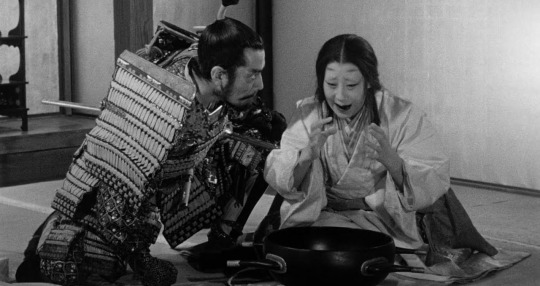
Toshiro Mifune and Isuzu Yamada in Throne of Blood
#40
BRASSED OFF
Mark Herman, 1996, UK
One of those northern working-class comedies, very much in line with The Full Monty and Billy Elliott, that cheekily blows its own horn and stands out for depicting community and an eagerness to achieve in the face of adversity. With the local coal mine due to close, it signals the death bell for the colliery brass band. So, the miners and their dedicated band leader, played attentively by Pete Postlethwaite, steam ahead with practice for a national competition, while the members lives become intertwined and complicated. Full of foolhardy fun and pensive observations and introspections, it seems to me it achieves a well-thought meaning that one shouldn’t give up, no matter what obstacles we face. Along with all of this, the traditional songs and original score starkly resonate honesty and pride to boot!
#41
GAS FOOD LODGING
Allison Anders, 1992, USA
A lovely oddball of a picture, where I feel like a hanger-on to the daily lives of three women living in a trailer park in a New Mexico town. There’s something genuinely woven into the simplicity of their surroundings and an abiding yearning for something else. In this case, love, or at least figuring out your place in the world. Characters are portrayed unassumingly without veering into cliché or irritation. The film deserves your patience as we observe and grapple with the pressure of youth, midlife disillusion, mixed messages and confused confrontations, with the ever-present longing of escaping a deadbeat town. These resonate from start to finish.
#42
THOSE WHO LOVE ME CAN TAKE THE TRAIN
Patrice Chéreau, 1998, France
For me, the first half of Patrice Chéreau’s follow-up to La Reine Margot can induce motion sickness! Taking place on a train from Paris to Limoges, a motley group of individuals embark on a journey of self-discovery and revelatory perceptions of one another, whom all claim to have known a recently deceased artist, who’s funeral they’re roving towards. There are dramas en route, many of these waifs and oddballs determined and self-indulged behaviour revealing a multitude of aspects we name grief. Whether they’re genuine or not, remains to be seen. Yet, despite their disparate connections, they gel together well. The film is helped by fast-paced scenes and an artfully directed cord tangling it together in one interesting cluster, not only on the train, but also within the giant cemetery and at the artists bohemian house for the wake.
#43
RED DUST
Victor Fleming, 1932, USA
Jean Harlow shines in this somewhat simple and aloof romance concerning a rubber plantation owner and the trouble he finds himself in with his mistress. Harlow brings a feisty and zippy-like liveliness to proceedings, as Clark Gable does his darndest to nullify her, locking horns in a befuddled way. The Indonesian setting infuses with Oriental eloquence, the oppressive heat layering a veil of earth and soil over the sexual tension.
#44
WOMEN ON THE VERGE OF A NERVOUS BREAKDOWN
Pedro Almodóvar, 1988, Spain
One of Almodóvar’s more satirical (at least to me) films captures all his usual intricacies and characteristics; fast moving sentimentality, vibrant sets and locations, madcap characters, and major doses of regret and heartbreak. Featuring the fabulous ‘mambo taxi’, we witness the outrageous happenings played out in front of us. This is all induced by a scorching Spanish heat and temperament, playfully scattered around Almodóvar’s obsession with the art of cinema-making itself.
#45
TOGETHER
Lukas Moodysson, 2000, Sweden
Lukas Moodysson does such a good job of recreating the 1970s, you can easily be misled to believe this was indeed filmed during that period. The characters are depicted and played accurately with a sensitive sheen of Swedish melodrama. The troubles and issues (as well as frolics) one can expect from living in a hippie commune are presented very naturally. No matter how trivial they may seem, it raises questions about how we are as a society and our small place within it.
#46
LES DIABOLIQUES
Henri-Georges Clouzot, 1955, France
At the time of release, cinemagoers may have been horrified by the cunning events depicted on screen. As time progresses, attitudes towards violence and murder change, evident from its classification downgrading from 18 to a 12 the last time I checked. Anyhow, as a viewer, I allow myself to be drawn into its twisted web of tricks and deceit played out by the vampish and shrewd Simone Signoret along with the timid, nervy Véra Clouzot. The queasy air of unease is something one should be shrouded in as it builds towards an unsuspecting climax of twists and turns.
#47
A FOREIGN AFFAIR
Billy Wilder, 1948, USA
A later film starring Marlene Dietrich whereby she isn’t the leading lady but very much dominates with her presence. That’s not to take away from the splendid performance by Jean Arthur, who does a fabulous job of portraying a prim and proper congresswoman, who is out to do away with immoral and subversive behaviours lurking in the underbelly of post-war Berlin. The scenes at the nightclub are raucous, where mistress Dietrich sings Black Market. There’s a sense of humour pulling at the films cord, while footage of a ruined Berlin is startling bleak.
#48
ROPE
Alfred Hitchcock, 1948, USA
With so many incredible Hitchcock films to choose from and digest, Rope is the one that left a stain on my mind. Maybe it’s the simplicity; one apartment, a revolving array of characters, and absorbing dialogue that brings various theories and philosophies to the table. The suspense is thrilling throughout, as we speculate whether the trunk, now being used as a buffet table will be opened or not.
#49
PECKER
John Waters, 1998, USA
I’ve attempted to whittle down my selection of John Waters films and found myself returning to Pecker more often than others. His early films, whilst subversive and completely uncompromising, give me a headache, quite literally and I emerge perplexed from some sort of discarded husk. His films from the later part of the ‘80s and into the ‘90s are much easier to take. Pecker comprises Waters ingenious and perceptive wit for trash in a more watered-down sense, all-the-while painting a rather odd depiction of Baltimore life and its residents, the main subject matter for the budding photographer Pecker.
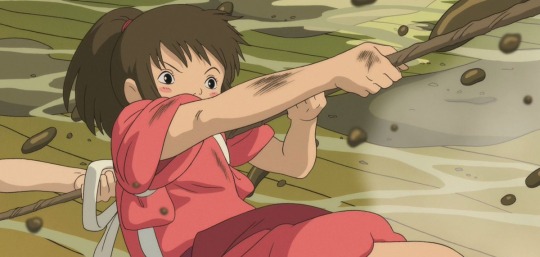
Chihiro voiced by Deveigh Chase in Spirited Away
#50
SPIRITED AWAY
Hayao Miyazaki, 2001, Japan
Being a teenager when this Japanese anime was first released, it now takes on the nostalgia-induced cliché/coma that comes with so-called childhood memories, but Spirited Away is justified in that respect. It’s strikingly beautiful; from the intricate animation and colours to an exuberant potpourri of fantastical characters, overly sentimental and gallant sounds, interspersed with truly grotesque and terrifying depictions of human emotion and imagination. The Japanese and English language versions both emit the same soul, designating equal charm whichever way you experience it; a testament to the genuine magic and fantasy. Other titles from Studio Ghibli before and after are lovely but nothing compares to Hayao Miyazaki’s sublime and wonderful Spirited Away.
#51
ANOTHER YEAR
Mike Leigh, 2010, UK
Mike Leigh is likely to be high on the list of favourite film makers for many. For me, he sparks a sense of sentimentality and anxiety-ridden realism in my aorta chambers. There’s an essence of kitchen-sink drama-like qualities to his work too, a bit like the sensitive anguish we get with Ken Loach (Kes, Poor Cow, The Wind That Shakes the Barley), yet less forced perhaps. Another Year finds Leigh analysing the psyche of the human spirit by those comfortable enough to help others. Split across the seasons, it delves deep into various types of characters, family members and friends, exploring troubles with heartachingly tenderness. Ruth Sheen and Jim Broadbent are wholly believable as the offbeat straight-talking and caring couple, Sheen’s character acting as a diligent matriarch, although she allows space for her acquaintances to reel in their own misgivings and apprehensions.
#52
BELLE DU JOUR
Luis Buñuel, 1967, France
A glimpse into the daily life of a bored bourgeois housewife, this Buñuel picture contains a burning sense of desire that resides inside, waiting for some sort of emancipation. Catherine Deneuve approaches the part with both a nimble directness and gentle aloofness, not without a glint of wide-eyed naivety in her eye. Coming from a well-established avant-garde director, the metaphors are sure to make me think what exactly this all means, but it’s surely an exhilarating trip.
#53
SILENCE OF THE LAMBS
Jonathan Demme, 1991, USA
The horror genre isn’t one I completely go for in cinema; perhaps being drawn to the more psychological and fancifully manipulative films are what pique my disillusion. These are very much welcome. This psycho-horror genuinely spreads a chill through my feeble frame. The eerie opening lays an ominous tone, and that encroaching feeling lurches throughout the entire picture. The mind of its killer, Buffalo Bill crawls into your thinking, as does that of detective Clarice Starling, played effortlessly by Jodie Foster. A terrifying night vision scene ensues towards the finale, requiring us to lift ourselves out of the dumps of a dank and dangerous place.
#54
STRAY DOG
Akira Kurosawa, 1949, Japan
The oppressive Tokyo summer heat always felt like an overarching character in Kurosawa’s gangster crime thriller. With his often-cast main man, Toshirô Mifune scrabbles around the darker and undesirable parts of town in search of his stolen pistol, the heat sweltering and intensifying as the story progresses. What’s beautiful about the film is the way our inexperienced detective slowly learns more about his own work when directly impacted by a crime.
#55
THE BIRDCAGE
Mike Nichols, 1996, USA
An up-to-date rework of the classic La Cage aux Folles, faithfully depicted, and perhaps taken even further on screen by Robin Williams and Nathan Lane. I love the way it lures me in with the lounge revival and tiki exotica backdrop of the 1990s and its fabulously glitzy hijinks of cabaret nightlife, succinctly pouting at you. With laughs and much camp mischief to be had, the heart of what family means is unveiled with nuances of acute generosity.
#56
PICNIC AT HANGING ROCK
Peter Weir, 1975, Australia
The sense of loss paired with what we’d consider a conspiracy theory-like disappearance is brimming with boarding school innocence and sexual tension, made incredibly more difficult by the strict Victorian setting in the Australian outback. There’s something strangely supernatural swimming, almost floating between the rocky landscape and naturally formed columns. It’s almost gut-wrenching to witness the downfall of the matriarchal boarding house mistress, serving as a sort of profound metaphor about the unravelling of our own perceptions of people and the human condition.
#57
PRIVATE PARTS
Betty Thomas, 1997, USA
The life and times of Howard Stern are played out by himself in true-to-life lurid fashion, and even if you don’t know much about the outrageous U.S. national radio show presenter, just be thankful that his story is told. Fascinating to watch his rise from smalltown radio show host to mega personality, observing the ways he broke barriers and crossed boundaries in mainstream, corporate MOR America, all with tongue firmly in (ass) cheek notoriety.
#58
HAIRSPRAY
John Waters, 1988, USA
Following his early films of pure gross-out and bile contaminated hilarity, John Waters 1988 commercially viable Hairspray has all the right components, welding together a sardonic look at the faults of the 1960s, all purposely wrapped up in family fun viewing. The cast is brilliant, firm Waters favourites Divine and Mink Stole revolve around Ricki Lake, Deborah Harry, Sonny Bono and Ruth Brown as the zany Motormouth Maybelle, who assuredly has some of the most memorable lines put to celluloid: “Papa Tooney. We've got a Looney” and “No matter what you've heard, we are gonna teach the white children how to do The Bird!”. Waters tackles the civil rights movement with dirty aplomb, poking fun at a white dominated society, as well as the ludicrous age of teenage youth with utter wry mockery.
#59
THE ELEPHANT MAN
David Lynch, 1980, USA
I thought it might be a tricky decision choosing which Lynch film(s) would feature here, but then it became apparent it wasn’t so. His movies are great exercises in otherworldly dreamlike realms but for me can be too all consuming and bloated in pretentious soup. Whether it be the insanely complex Mullholland Drive, endless Inland Empire, convoluted Lost Highway, or regrettably irritating Eraserhead, they all seem slightly devoid of the sincere emotion I seek. Yet, this is where The Elephant Man trudges in. Shot in beautiful black and white, the dreamy trance-like pace and atmosphere only adds to the refined tenderness revealed from the so-called ‘monster’. It’s gut-wrenching to watch as he’s burdened by the harsh Victorian society around him, and the corruption inflicted upon our apprehensive protagonist.
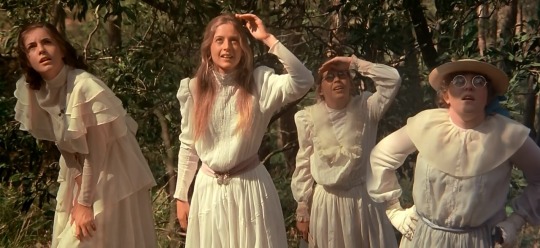
Roaming the mysterious Australian landscape in Picnic at Hanging Rock
#60
A TASTE OF HONEY
Tony Richardson, 1961, UK
A rather gritty and grubby adaptation of the Shelagh Delaney play depicting British life in the late ‘50s and early ‘60s. When transferred to screen, it might well play on and pigeonhole certain types of people, yet manages to capture working-class lives with simplicity, as well as the situations communities faced at the time. Catfights and squabbles between the mother, played incredibly convincingly by Dora Bryan and daughter Rita Tushingham, are slightly unnerving and uncomfortable, while the film gives weight to so-called outcasts; Paul Danquah as its black sailor and Murray Melvin as closeted homosexual. Tony Richardson’s direction circles a sense of longing and dread to proceedings, especially potent in a patriarchal, white-straight man dominated society.
#61
MESHES OF THE AFTERNOON
Maya Deren and Alexander Hammid, 1943, USA
A short avant-garde collection of dream state imagery to confuse and befuddle the mind. What it means exactly is up to you, but you must allow yourself to be immersed in the deep chasm of unrealities and esoteric abandonment.
#62
DANCER IN THE DARK
Lars von Trier, 2000, Denmark
There was only ever going to be one Lars von Trier film on the list, and obviously because it features Björk in the lead role. The story is like a knot of nerves, slowly unravelling as tragic melodrama, all interspersed with musical numbers based on musique concrète, otherwise reflecting the drab surroundings Björk’s character, Selma, finds herself in. These act as pure escapism and pays homage to musicals while being rather anti-musical, dispelling traditional conventions entirely. It adheres to the Dogme ‘95 concept, which you could say was better utilised in films such as Breaking The Waves or Festen, but it still trickles through here notwithstanding. The first time I watched Dancer In The Dark, I’d only recently discovered Björk, so inevitably bawled my eyes out over the adversities Selma was placed in. Even though a lengthy watch with jerky camerawork, I still believe the film is great, discarding the clichéd predictions of Hollywood, yet adoring the classic musicals of the silver screen at the same time, whilst serving bold manipulation. I’m just not entirely sure what Von Trier was attempting to say about our harsh society.
#63
AUGUST 32ND ON EARTH
Denis Villeneuve, 1998, Canada
This French-Canadian indie really took me by surprise. It involves a somewhat bizarre plot based around its main character, played by Pascale Bussières, wanting to have a baby with her friend, spurred on by surviving a car accident. Something like a wake-up call, or a last chance? Even stranger is the desire to conceive in the salt desert of Utah. Despite the selfishness of the main character, this curious story kept me on a hook, mainly to see where it would lead next. That would be a rendezvous in a weird mini pod, all futuristic techno oddness, drunken and revelatory and sees the pair questioning their kinship. This all seems a million miles away from Villeneuve’s later films; Arrival, Blade Runner 2049 and the Dune remake!
#64
BRIEF ENCOUNTER
David Lean, 1945, UK
A rather sentimental British film by my standards, but it manages to tap into a yearning and sense of adventure that we as people somehow unwittingly lose being part of the system. Propelled by the intensity of Rachmaninov, the train station setting and a very English post-war rebuild, the understated demeanour is concealed in wonderment.
#65
A PORTUGUESA
Rita Azevedo Gomes, 2018, Portugal
An extremely minimal film, certainly in terms of dialogue, but what it lacks in script, makes up for in grand and controlled theatrical gestures. Every detail feels painstakingly accurate and abundant, so much so, I put my trust in there being no historical inaccuracies to otherwise demystify the experience. The viewer does require patience, as each scene is framed to be some sort of artistic masterpiece - this involves very little panning shots or camera movement whatsoever, from what I remember. It’s a triumph of photography and cinematography, yet one I feel will be largely ignored.
#66
VERONIKA VOSS
Rainer Werner Fassbinder, 1982, Germany
Obsession and narcotics liquefy in this dreamscape by Rainer Werner Fassbinder. His films all have heart and soul, and even though Veronika Voss herself is rather loathsome, perhaps we should understand it’s the system and omnipresent machine we’re sucked into that’s at fault. With a haunting soundtrack swaying among the trauma of our morphine dependent recluse, and desperate washout, one gets the sense her ongoing issues are building to a downward crescendo.
#67
INNOCENCE
Lucile Hadzihalilovic, 2004, France
Within the same stylistic vein as Jean-Pierre Jeunet’s Amélie or Delicatessen, this eerie, slow-burning horror is saturated in opulent green and red pigmentation, and innocently treads a path depicting the upward development of youth and the inevitable journey into the real world. The sumptuous and peculiar imagery of a tucked away boarding house and quietly vicious superiority from its pupils is uniquely frightful. As they clamber towards their debut, it’s even more intriguing when considering the darker undertones of its two dejected and repressed mademoiselles. It all makes sense when the dark fairytale is over, and the final allegory is a reflection on the very loss of innocence.
#68
OFFSIDE
Jafar Panahi, 2006, Iran
I didn’t think a film about football could sneak into my list, but here we have a triumph at showing the struggle women in Iran face. The majority of scenes are shot, quite literally offside where female football fans are penned in after being discovered illegally watching the game within the stadium. It has that guerilla style of filming throughout, and we hear from different types of women, ignored and dismissed by bumbling security guards and officials. With a celebratory, and slightly sentimental finish, we’re merely left to contemplate.
#69
PERSONAL SERVICES
Terry Jones, 1987, UK
I weirdly love how this film portrays a grimy London, a sooty-laced air imbued with a strained and rigid seediness that’s all very English. The settings and locations are dreary, and dull, but awash with a diverse array of sexual taboos and kinks. The film acts as an exploration on the rise of Cynthia Payne, brothel hostess and sometime dominatrix, all overlaid with dark humour and hijinks, and played by Julie Walters superbly. It’s also a nice partner film to Wish You Were Here from the same year, based on the childhood of Cynthia Payne (both films feature David Leland as writer) and are well-worth a watch.

Björk in Dancer in the Dark
#70
THE FULL MONTY
Peter Cattaneo, 1997, UK
Without really meaning to, I automatically lump this together with other working-class films set in the north, such as Brassed Off and Billy Elliott. These films are full of antics and cheeky comedy, clenched teeth and a genuine heart. They also act as a nice distraction, if not amusing counterpart to the realism served by the likes of Mike Leigh and Ken Loach. What we get with The Full Monty is a jubilant look at the will of the human spirit when challenged. In this case, we witness a bunch of unemployed steel workers dealing with their immediate situation in the best way they know how, and what better way to do this than put on a striptease act. It touches on what it means for self-respect and their awareness of it. There’s laughs to be had amongst the day-to-day strife's, but their unwavering ambition remains the same.
#71
JURASSIC PARK
Steven Spielberg, 1993, USA
Including this adventure classic on the list might be considered an obvious choice and it can veer into camp parody at times. But with so many memories ingrained since childhood, how could it not be added? It has all the components you need for an action-fantasy adventure, aging rather well in the process. It strangely has heart too, as we witness a crestfallen Richard Attenborough, but the dynamic trio in the form of Sam Neil, Laura Dern and Jeff Goldblum lead the charge on a rescue mission. The film paces along perfectly, building plot pieces that lead to high intensity action complete with impressive dino-CGI and animatronics, as well as the all-important magic only Spielberg can conjure.
#72
CARRIE
Brian De Palma, 1976, USA
The horrors of coming of age and secondary school are enough to instil panic and anger in large doses. Enduring such memories alongside Carrie, who summons frightful telekinesis and the paranormal, immediately puts me on her side in. The film itself straddles elements of goofy comedy, classic horror manipulations, maniacal religious overtones, and lastly, delightful repercussions in a riotous bloodbath. I’m a regular schadenfreude.
#73
FESTEN
Thomas Vinterberg, 1998, Denmark
Underlying traumas and deep-rooted psychosis unearth and uproot themselves in this Dogme ’95 drama of intertwined family rifts and power dynamics. The unadulterated style of realism delivered through imposing camerawork is awkward, muddy and unnerving. With revelations slowly stirring in the strangely cramped castle setting, the troublesome dinner builds to a provocative nail-biting finale.
#74
ETERNAL SUNSHINE OF THE SPOTLESS MIND
Michel Gondry, 2004, USA
The innate possibilities and yearning etched into celluloid here is what captures the imagination; a glimpse at realigning the human memory or evading it shall we say. But can you imagine that possibility; the chance to block out unwanted trauma or mistakes, dalliances or disputes, the chance to delete certain aspects of one's life, much to the dismay of others. Michel Gondry uses his inventive vision to create illusion and uncertainty, sometimes heartwarming and sometimes scary. It’s not surprising of me to feature the director due to his work on eight Björk music videos, his collaborative work with the singer always spellbinding. The synergy Gondry utilises with Jim Carrey, Kate Winslet, Elijah Wood and Kirsten Dunst is marvellous here too, each of them fantastic in their roles. He aims to push the limits with subtlety and poignancy in a swirl of odd strangeness.
#75
THE WATERMELON WOMAN
Cheryl Dunye, 1996, USA
Inescapably ‘90s in overall look and ambiance, The Watermelon Woman tackles subjects concerning perceptions of race, history, queerness and portrayals of people with a divine lo-fi resonance. It did a very convincing job of fooling me into thinking Dunye’s research into the typecast ‘Mammy’ of 1930s Hollywood was entirely real, all punctuated with her day-to-day life at the video store she works at and her continued search for a girlfriend.
#76
MON ONCLE
Jacques Tati, 1958, France
Something of a unique picture as we traverse the odd day-to-day happenings of an angular and sparse French home, complete with vibrant and colourful architecture, 1950s wacky and modernist appliances and the off-kilter airs-and-graces of a seasoned middle-class couple. Much tomfoolery is to be had at the factory and trips to an unconventional rickety house in town, it’s all tied together by snippets of bungling dialogue and well-choreographed fanciful movements that are entirely sweet and charming.
#77
HIGH HOPES
Mike Leigh, 1988, UK
Fascinating to see parts of old Kings Cross in the late ‘80s, and even more fascinating to try and understand the many close to the bone subjects Leigh aimed to illustrate here; class, wealth, socio-economic status, the patriarchy and the sheer drudgery of existence in a political landscape of Tory oppressed Britain. Played out over a constant dirge of cello, harpsichord and double bass, that’s either mournful or spritely depending on the mood, it raises more questions upon repeated viewings. It’s similar in style to Leigh’s subsequent films, Life Is Sweet and Naked, although less good-natured or preachy, and we’re left to wallow in a dread that seeps into the fabric of our being. I begin to wonder why such a cognitive demanding and traumatic look of the world could end up on my list, but it’s essential viewing for a perspective, and as the Marxist-leaning son Cyril states mid-film “It’s a different world now”, begging the question, what can we change?
#78
TRAINSPOTTING
Danny Boyle, 1996, UK
Following on from the murky grit of Shallow Grave, Danny Boyles Trainspotting pushes the horror even further. With an unabashed soundtrack matching the ongoing ecstasy and disregard for human existence, the implosion of the kaleidoscopic cast grips you in its defiled veins.
#79
MRS. DOUBTFIRE
Chris Columbus, 1993, USA
Robin Williams is somehow at his most outrageous here, his wacky nature tailored to fit the frumpy, but seasoned and respectable drag/ cross dresser persona of Mrs. Doubtfire. It treads a rather routine and corny ‘90s family film path, and at times overdoses with mushy sentimentality and messages about parenthood and responsibility. But there are many laughs and gags to be had along the way, with Williams the star of the show in a sea of dowdy characters - the restaurant scene towards the finale is a frenzied, chaotic and slapdash stroke of genius that’s full of character.
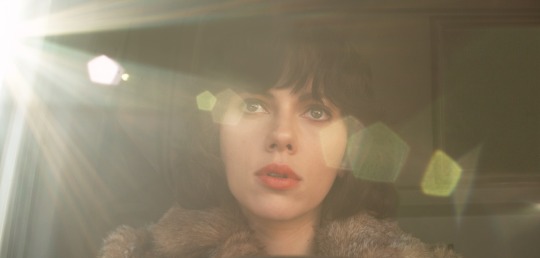
Scarlett Johansson in Under The Skin
#80
UNDER THE SKIN
Jonathan Glazer, 2013, UK
An eerily lustful concoction with an irresistible sound motif. It lures the viewer into something that seems to signify a new-age style of sci-fi and horror; intelligent sci-fi cinema but without any overlong grand statements? Under The Skin urges us to question our principles about human sexual nature, morality and our molecular place in the universe. The otherworldly alien, played subtly by Scarlett Johansson juxtaposed against the Scottish landscape and city, as well as some unusual guerrilla filming are all brilliant choices and resonate coldly in a sea of despondency and confusion.
#81
THE CREMATOR
Juraj Herz, 1969, Czechoslovakia
There’s a dark sense of humour pumping through the veins of this black comedy. Framed shots and cinematography are perceived as 1930s expressionism; precise angles and wide-open views of the crematorium, inside and out. The candid and somewhat gruff proclamations from the cremator himself, an antagonist played creepily by Rudolf Hrusínský are darkly twisted, as his obsession with death and murdering his family seep into the membrane. The discordant atmosphere and jarring imagery slowly trickle free, leaving what can only be understood as symbolism pertaining the onset of the Nazis.
#82
BOYS ON THE SIDE
Herbert Ross, 1995, USA
The road trip movie is a fun journey to embark on, especially with strong-willed women, no matter what triumphs, mishaps or dilemmas they unwittingly find themselves in. Despite her stellar performances in Sister Act, Ghost and Jumpin’ Jack Flash, Whoopi Goldberg is pretty much flawless here as the assured head-strong lesbian singer, whilst Drew Barrymore plays the rebellious gal rather convincingly. Both of whom join Mary-Louise Parker’s character on the move to California. The film plays around with the notion of sisterhood, approaching it with a tenderness and spontaneity which is heartwarming but not excessively comfortable in its pulpy mulch. It builds to a charming, if sombre finish and one that I wasn’t quite expecting.
#83
BUGSY MALONE
Alan Parker, 1976, USA
Other childhood favourites of this ilk can easily dissolve. Yet, Bugsy Malone is one that doesn’t, undoubtedly due to the speakeasy setting of the ‘30s, gangster mobs using cream-like substances to gun enemies down, and more importantly, an excellent set of memorable songs. The child-only actors are cast well, none of them overplayed or obnoxious. I might consider it a worthy contender as one of the best musicals, simply because the songs don’t irritate, and the story retains a sense of humour. As a spoof of old gangster films, the pie fight finale is a humdinger and gives way to a well-meaning merge of two opposing sides.
#84
BEING JOHN MALKOVICH
Spike Jonze, 1999, USA
Indeed, it’s a secret portal from the seventh and a half floor of a dreary office that leads to the mind of John Malkovich? This beguiling picture dissects obsession and identity considerably candidly, but mainly it injects a hefty dose for the bizarre into our bloodstreams.
#85
MURIEL’S WEDDING
P.J. Hogan, 1994, Australia
Although messy and farfetched in places, the Australian sense of humour is the winning formula here. With an ABBA soundtrack offering Muriel an escape to realise her dreams, it’s an offbeat romantic comedy with a hollow heart, although it does capture the essence of being a misfit, whether you’re a rebel or bit of a birdbrain. The pairing of Toni Collette and spiky Rachel Griffiths as pals with a tempestuous relationship works incredibly well and sees us through to the end.
#86
CLOUD ATLAS
Tom Tykwer, Lana Wachowski and Lilly Wachowski, 2012, Germany
The high-octane ride of Cloud Atlas leaves an undeniable aura of melancholy over my rumination. Its six stories are beautifully interwoven by the three directors, perfectly utilising the talents of its cast in dual roles spanning the hundreds of years it resides. There’s an abundance of harrowing emotions dispatched across these eras, and although not without a sense of humour along the way, its finale is a glimmer of hope in what is already considered to be a post-apocalyptic and uneasy dystopia.
#87
THE MIST
Frank Darabont, 2007, USA
Adapted from the Stephen King novel, this is an interesting take on the horror sci-fi genre, its impending sense of doom obscured by a peculiar mist. When the locals become trapped in a minimarket, caged by their own fears and hardships, you intensely feel the inevitable cabin fever settling in and the subsequent division between a community dealing with their fate. The viewers own understanding is also shrouded in mist, and the film inquisitively taunts with creatures, supposedly unleashed by a government facility experiment gone wrong. All very B-moviesque and dipped in conspiracy. The bone-chilling use of ‘The Host of Seraphim’ by Dead Can Dance is a concluding factor placing it on this list.
#88
THE FALL
Tarsem Singh, 2006, USA
Simply put, it’s a magical escape into the mind of a child’s viewpoint when the tales of a wounded stuntman are relayed to her from a hospital ward in the 1920s. The imagery is vibrant and colourful, dripping in opulence with a delightful enthusiasm trickling phantasmagorical-like from country to country and from each heroic character to the next. With an innocent vision from the child, her storyteller is equally affected by his much-desired morphine reliance to help fuel his disheartened disposition.
#89
RAN
Akira Kurosawa, 1985, Japan
A film from Kurosawa later in his career, it brings to life all the similar themes and ideas of samurais and warlords expressed previously in his 1940s-1960s epics, but with Ran, we have the added essence of these stories in bright, Technicolor-like opulence. Returning again to William Shakespeare, Kurosawa tackles King Lear and creates a tragedy all his own. Outstanding performances abound, and huge bouts of violence circle around instinctual notions of revenge, treachery and power.
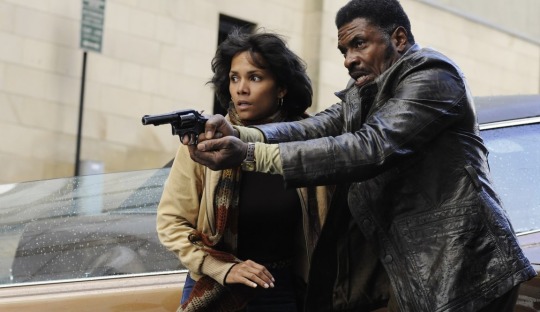
Halle Berry and Keith David in Cloud Atlas
#90
WHITE MATERIAL
Claire Denis, 2009, France
The resilience and stubborn nature of Isabelle Huppert’s character in White Material is a strange one. The ominous onset of an uprising in an unnamed African French territory is ever-present and broods, no doubt on racial injustices and conflict. It makes for an unnerving and weighty, if not social-philosophical viewing, as she fights to maintain her coffee crop and manage the breakdown of her profession, business and family.
#91
THE GREEN RAY
Éric Rohmer, 1986, France
One of my more recent discoveries, the French directors work seems based purely on the whims and charms of human characteristics. Just check Rohmer’s Autumn Tale and A Tale of Springtime for deeds of curiosity and soul stirring sincerity. The Green Ray is an equally reserved story of relatable proportions, and one that flashes upon thine eye. The solo holiday is presented naturally, locking in those awkward moments when you play hanger-on, or are simply unsure of your place. The vague and disparate connections Delphine feels, played effortlessly by Marie Rivière, are applied with almost organic, and spontaneous finesse. This is fleeting, as optimism for romance hangs in the air and when we finally get there, the meaning behind the film title is eloquently given, if only for a split second.
#92
MORVERN CALLAR
Lynne Ramsay, 2002, UK
Following her debut Ratcatcher, Lynne Ramsey caringly guides characters in this adaption of Alan Warner’s novel. There’s a realism to the Scottish landscape and town, whether it be the supermarket Morvern works in, or an eerie party on a nearby Scottish isle, and not forgetting the insane hacking up of her dead boyfriend in the flat. These are all skilfully depicted to make us feel like imposters. The unworldly aura of Morvern’s straightforward life turned upside down is strikingly likable. After all, her boyfriend has just killed himself, so you can accept her naïvely altering his unpublished novel and passing it off as her own. A trip to the highlands to be rid of the remains is like horror-noir, while a later trip to Ibiza offers some relief; the shambolic and grief-stricken mind of Morvern issuing herself some much need catharsis.
#93
STRICTLY BALLROOM
Baz Luhrmann, 1992, Australia
Depicting the usual fare of lovable bogans from the same white trash barrel we see in other ‘90s Aussie hits (Muriel’s Wedding and The Adventures of Priscilla, Queen of the Desert), we’re treated to a hilarious shimmy of dance routines, camp comedy, and heated disagreements. Let’s not forget the impassioned romance too, as essentially, we’re anchored in a love story here. It’s one Baz Luhrmann manages to enthusiastically tell, evading the clichéd pitfalls usually associated with the subject. The terribly desperate Australian Pan Pacific Championships are fraught when upended by Scott and Fran’s fierce and fervid Paso Doble, greatly piling on the ironic humour to the max. It’s a shame many of Luhrmann’s other films don’t bear the same results.
#94
THE LOVE WITCH
Anna Biller, 2016, USA
An entirely refreshing take on witchcraft; one that is grandiosely camp and a feminist ode to love. Backed by gentle harp plucks, we traipse through foliage, Victorian tearooms and elaborate set pieces serving as an enigmatic triptych. Our witch dabbles in anthropology using an assortment of apparatus and instruments, fusing potions made from herbs, menstruation pads and piss to cast spells, perfectly embellishing the vampy costumes and pagan symbolism. But we find our witch in a quandary from loving too much. The acting is crystallised, all clear and precise, slowly drawing on B-movie exaggeration, while locations are pure daydreams from a Technicolor phantoscope.
#95
THE PLAYER
Robert Altman, 1992, USA
From the drawn-out opening scene that eerily pans across a movie studio offices and parking lot, it ambiguously outlines a clear atmosphere. We act as peeping Tom to daily routines, goings-on, eager pitches and curious hate mail, and we get the idea that Hollywood is not all it seems. The film has an ominous layer of (star)dust thinly veiled over satirical proceedings, paying homage to classic Hollywood, film noir in particular. The studio executive is expertly ‘played’ by a crafty and shrewd Tim Robbins, and whence taking a darker turn, the satire doesn’t let up. Neither does our voyeurism as a shifty Lyle Lovett and hilarious Whoopi Goldberg play upon one another as an amusing detective duo. Full of star cameos, unique cinema references and perfectly framed shots, it’s a sinister glance into the cutthroat world of Hollywood itself, the lampooning rolling until the very end.
#96
LILYA 4-EVER
Lukas Moodysson, 2002, Sweden
Moodysson’s light-hearted and funny coming of age film, Show Me Love and the even funnier commune dwelling Together focused on the humility of people trying to simply get along in the disparate locales they found themselves. The devasting Lilya 4-Ever broke this run of breezy films abruptly, tackling the hard-hitting subject of sex trafficking. By starting in an unnamed area of the Soviet Union, we act as distressed bystanders to the mother abandoning her daughter, and the false hope granted to Lilya from a stranger with the promise a new life in Sweden. It’s heart-breaking to see the awful conditions and situations she finds herself, antagonising at such injustices. The only saving grace is her friendship with suicidal 13-year-old Volodja, who has a presence in her life, even after he’s gone.
#97
LENINGRAD COWBOYS GO AMERICA
Aki Kaurismäki, 1989, Finland
We venture into the strangely strange here, but all with a firm tongue-in-cheek, although it sometimes doesn’t seem that way. We embark on a road trip with the Finnish klezmer music group and attempt to withstand their eccentric look and quirky sound to match. We follow their dim-witted bravado with an open heart as they try to make it or break it in corporate America, and then Mexico, observing an assortment of perceptions from folks along the way.

The Leningrad Cowboys on the road in Leningrad Cowboys Go America
#98
UN CHIEN ANDALOU
Luis Buñuel, 1929, France
An early surrealist short depicting the unconscious state a human mind can reach. The imagery is hypnotic, striking and bizarre. We onlook symbolism ranging from the slitting of an eye amidst roaming night-time clouds, an invasion of ants and strange dalliances in almost every corner of this dream realm, all backed by decidedly French musique. What can we expect when the screenplay was written by Salvador Dalí. None of it particularly makes sense, but to find any meaning would be missing the point.
#99
SECRET BALLOT
Babak Payami, 2001, Iran
From the opening shot of a ballot box landing in an unknown province of the middle east, we’re set-up for a film that’s as minimal as the vast landscape the registrar traverses in order to collect votes. Accompanied by a stringent, and often bewildered solider, who doesn’t seem to have much going on up top, it’s interesting to see how he slowly gains respect for the tenacious official seeking ballots. Much of the footage of residents in the remote areas could be classed as documentary, but the statements concerning the validity of their votes, or that voting itself doesn’t bring about any change for them, are rather frank in honesty.
#100
CHESS OF THE WIND
Mohammad Reza Aslani, 1976, Iran
Closing on this list was a difficult task with a handful of movies bubbling under vying to take #100’s place. Yet, I’ve settled on an Iranian oddity from the ‘70s set in the 1920s which serves as a gothic horror that slowly percolates unease and impending dread. The film itself was apparently lost forever at the turn of the Iranian Revolution, presumably never to see the light of day again. The characters, locale settings, Persian interiors and objects are all given equal focus throughout the restored picture, and with an assortment of themes explored, it all builds to a frantic crescendo of retribution.

Fakhri Khorvash centre stage in Chess of the Wind
#movies#films#cinema#hollywood#film noir#screwball comedy#cinematography#top 100 films#british cinema#world cinema#international cinema#musicals#animation#art house#indie film#b movie#kitchen sink#horror movies#film director#movie stars#movie stills
2 notes
·
View notes